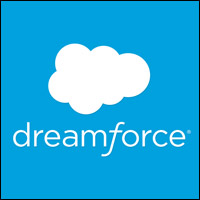My only question about Salesforce’s recent revenue announcement is why the company described the vast majority of its nonprofessional services revenues as “subscription and support.” Proserv revenues were appropriately small, at US$224 million, while subscription and support was $3.17 billion, or 26 percent more than the same quarter a year earlier. Nice going, by the way.
Salesforce growth is seemingly nonstop, and the company raised guidance to $16 billion at the high end of its range for the next fiscal year, 2020. Fast growing, big, capturing lots of revenue and probably much of the oxygen in the CRM room — I get that. Still, why subscription and support, as if they were distinct?
Hinting at Consolidation?
The whole premise of Software as a Service, or subscription software, always has been that everything is rolled up into one price, including the service itself, a modicum of support, maintenance, enhancements, and the infrastructure that runs it all.
Maybe the answer has been there all along and I have missed it — or maybe Salesforce’s labeling reflects some subtle changes that are going on at Oracle.
A couple of quarters ago, Oracle merged its revenue categories into one hairball, obscuring the fact that the Infrastructure as a Service (IaaS) number was a lot smaller than the SaaS and platform numbers. I’ve maintained the company did that because it didn’t have the fully deployed cloud data centers it needed to be more aggressive in the market.
That’s changing, though. An Oracle cloud data center is no small thing. It’s complex and expensive — full of redundancy, failover, high bandwidth and such — and Oracle has been deploying data centers as quickly as possible.
Other vendors, Salesforce included, have partnered with infrastructure providers like Amazon. Its AWS service can host Salesforce — especially in foreign markets, as the company spreads its wings and bows to international pressure to place data centers near or in the country where the data originates.
Oracle won’t do that for lots of reasons, such as its bid for all the marbles in the Defense Department’s billion dollar JEDI procurement. It wouldn’t do for Oracle to rely on AWS in its private business but insist on vertical integration inside DoD.
In the private sector, Oracle faces the same challenge as Salesforce, but as its legacy base already has data in-country, many customers expect more or less the same treatment. Without the legacy, Salesforce customers have made a different calculus. Oracle also has an apparent strong desire to capture revenue from hosting legacy apps that don’t convert to new cloud apps, which makes sense.
So why did Salesforce report subscription and support revenues? It might just be a nod to Wall Street, a way to predigest the numbers to enable financial analysts to compare apples more easily. If so, it’s a sign of how the industry is consolidating, with nods to both past and future.
The Evolving Software Utility
By my count, Salesforce has about a dozen clouds. Some, like the Sales Cloud, generate well in excess of one billion dollars each. The average cloud revenue is now a billion and counting. That’s an enormous achievement, but what’s next?
As they say on Wall Street, trees don’t grow to the moon. There are always natural checks and balances on growth. A market matures or just runs out of fresh customers, for instance. That could happen with Salesforce, though that eventuality seems well off in the future.
The company has future-proofed itself to a high degree by enlisting the help of so many partners — first in the AppExchange and now in vertical markets. Also, products like Mulesoft, the Integration Cloud, still did independent business last time I checked.
Salesforce also is carefully stepping out but not away from CRM with its emphasis on all purpose application development. In that scenario, CRM has become the biggest and most successful demonstration project, and there’s more blue-sky opportunity in app development than there is even in CRM, as new apps in fields like healthcare show.
Salesforce has been architected for growth from the get-go, and its business model has few of the lurking pitfalls of earlier generations of software companies. This might represent the end game of software. We will never again be able to live without software, but it is becoming ubiquitous, embedded so deeply in modern life that everyone depends on it. When that happens, you’ve crossed over from a business to a utility.
It’s not just Salesforce that’s going this way. Other companies that make up parts of the evolving software utility include Oracle, whose hardware and autonomous database are used throughout the industry, social media vendors like Facebook and Twitter, search providers like Google, and many others.
In light of the negative news coverage companies like Facebook have experienced lately, it’s reasonable that behind the scenes more mature vendors are beginning to lean on the younger players to clean up their acts for the good of the industry.
We’re already seeing people like Salesforce CEO Marc Benioff compare Facebook to cigarettes and nicotine addiction.
With $16 billion in forward-looking revenues in his corner, when Benioff speaks, the whole industry has to pay attention.

























































Social CRM
See all Social CRM